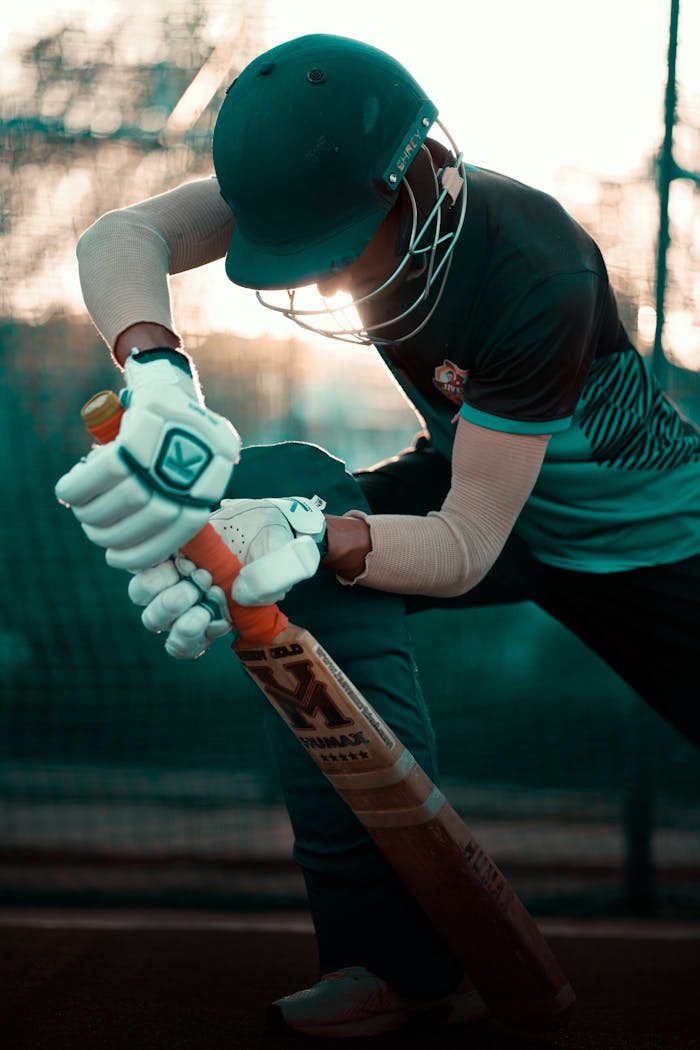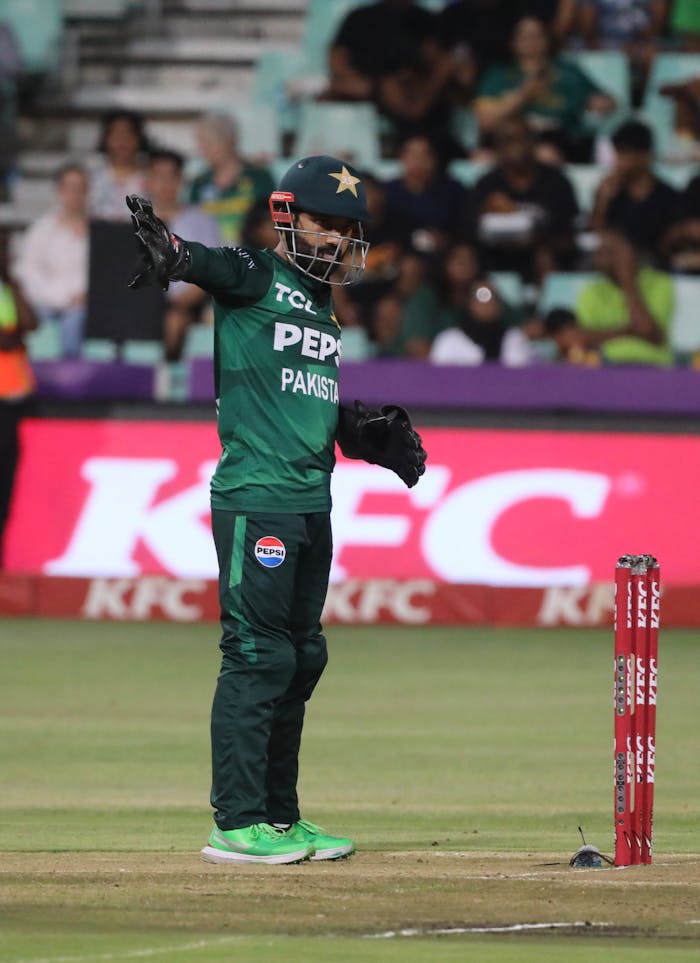
Cricket is a great way to enjoy the outdoors, exercise, and have fun with friends. The game is played by millions of people worldwide, making it one of the world’s most popular sports. This article provides a comprehensive, step-by-step guide to playing cricket! By the end of this guide, you will be ready to take your first steps in the wonderful world of cricket! Let’s get started and learn how to play cricket.
Here is an outline of the article:
[show]
How to play Cricket?
Cricket is one of the most popular sports in the world and is played by millions of people around the globe. It is a game of two teams, each with 11 players, in which one team bats while the other team bowls. The game aims to score more runs than the opposing team.
Runs are scored by the batting team when their batsman hits the ball and runs between the wickets. The bowler attempts to prevent the batsman from scoring by bowling the ball and catching the batsman. The team that scores the most runs in the allotted period wins.
Cricket is an exciting and thrilling game and provides hours of entertainment for players and spectators alike. Here are the 10 steps to play cricket like a pro:
- Step 1: Arrange the Prerequisites of the Cricket game
- Step 2: Know the Rules of the Game
- Step 3: Learn Cricket terminologies
- Step 4: Setting Up the Crease
- Step 5: Arranging Umpires
- Step 6: Hit the ball (Batting in Cricket)
- Step 7: Delivering the Ball (Bowling in Cricket)
- Step 8: Fielding
- Step 9: Scoring Runs
- Step 10: Finish the game
Game of Cricket: Play 3 online cricket games on Zupee. Click “Download App” button!
Step 1: Arrange the Prerequisites of the Cricket game
The following is a brief breakdown of the prerequisites, i.e., the equipment required to play cricket:
- Bat
- Ball
- Stumps
- Ground and Pitch
Cricket Bat
You need to arrange a cricket bat to play cricket. The size and material of the bat are important to consider. According to the laws of ICC, the global governing body of the game, a cricket bat must be made of wood, no longer than 38 inches and 4.25 inches wide, with edges no thicker than 40mm. It also cannot weigh more than 2.9 pounds (1.3 kg).
However, when you are just starting, it is strongly suggested that you use a lighter bat that is easy to hold and swing. When you feel comfortable with it, move to a heavier bat.
Cricket Ball
A cricket ball is the most essential piece of equipment in the game. It is a hard, round object with a cork or rubber center, covered with tightly wound string and then a layer of 0.5-1.0 mm of hard leather. The ball is then stitched with string to form a raised seam and lacquered to give it a smooth surface.
Cricket balls vary in size and weight depending on the cricket you are playing. According to the laws of ICC, the circumference of a cricket ball should be between 22.4 and 22.9 inches (57 and 58 cm), and it should weigh between 5.5 and 5.75 ounces (156 and 163 grams).
The ball used in cricket is often either white or red in color. A red ball is used in day matches or lengthier games (such as a five-day test match). But a white ball is used in shorter format matches (such as in Twenty20) or day/night matches.
However, if you are only interested in playing the game, you can use a regular tennis ball. As soon as you feel confident with the game and are ready to advance to the next level, switch to using a regular leather ball.
Stumps
You need stumps to play cricket. A cricket stump is one of three vertical posts that form the wicket and support the bails. It has a cylindrical shape with a domed top and is typically made of wood. There are two sets of wickets, 22 yards/20.12m apart, with three stumps in each set.
According to the laws of ICC, the height of the stumps should be within 28 inches above the playing surface, and their breadth should be between 1.38 to 1.5 inches.
The stumps are laid out in a line across the pitch (discussed further below), with the two end stumps equally spaced from the crease (discussed in Step 4) and the middle stump in the middle of the pitch.
Ground and Pitch
Cricket is played on a large, slightly oval-shaped grassy field/ground that does not always have a defined size. However, according to ICC rules, cricket grounds have an overall diameter of between 137 and 152 m.
A cricket ground is divided into three main areas of play, the largest of which are the outfield and infield, which are separated by a circular line.
The players use a cricket ground to field the ball and show their fielding (discussed in Step 8) skills. At the center of the cricket ground is a rectangular area known as the pitch. It is a hard, flat surface that can be natural or synthetic turf but must be level and smooth. According to ICC rules, the pitch should be 22 yards (20 meters) long and 3-4 feet (1-1.2 meters) wide.
Finding the nearest ground with a pitch of these dimensions is sufficient to practice and play the game when you are just starting.
Know about the largest cricket stadiums in the world.
Step 2: Know the Rules of the Game
Cricket is an exciting and challenging sport. Let’s look at the basic rules of the game:
- The game essentially brings two teams against each other in a battle between bat & ball, and of skill, spirit, and application.
- The number of players on each team is decided before the game and cannot exceed eleven players per side.
- The game can be played in two ways: over a set number of overs or a set amount of time. This will be decided before the game begins.
- Each team takes turns batting (hitting the ball, as mentioned in Step 6) and bowling (delivering the ball, as mentioned in Step 7) while the other team fields. A coin toss is used to determine which team will bat first.
- The batting team’s goal is to score as many runs as possible without losing wickets in the allotted innings. A batter can score runs in several ways mentioned in Step 9.
- The fielding team’s initial goal is to prevent the batting team from scoring too many runs and get all the batters out.
- Once all ten players have been dismissed, or all of the overs have been bowled, the innings ends, and teams swap roles, with the fielding team batting and the batting team fielding.
- In a limited-overs match, the team that scores the most runs in their allotted batting innings wins.
Now that we’ve covered some of the fundamental rules of cricket, it’s time to learn some crucial terminologies of the game.
Learn about the 42 rules of Cricket.
Step 3: Learn Cricket terminologies
Cricket is a game that is both strategically and physically demanding, and as a result, many terminologies are associated with it. This can be overwhelming for new players, but it is important to learn the key terms to understand the game.
Some of the most important cricketing terms are:
Batting side
The team that is currently batting.
Fielding side
The players who take to the field in an attempt to get the batters out and limit the number of runs scored by the batting side.
Batsman
The batsman is the batting side player responsible for scoring runs for their team.
Bowler
The player on the fielding side delivers the ball to the batsman and is a bowler.
Wicket-keeper
The player on the fielding side is responsible for maintaining the wicket, such as catching the bowler’s ball if the batsman misses the ball or gets an edge off the bat. The wicket-keeper is also the player to whom the fielders throw the ball in an attempt to get a run-out.
Innings
The batting side’s time on the field.
Overs
An over is a set of six legitimate balls delivered to the batters by a bowler.
Dismissal
Getting out, or losing a wicket, is referred to as dismissal. There are several ways this can happen, which we have discussed in Step 6.
Boundary
A cricket field’s perimeter, or the act of a batsman scoring a four or a six.
Bye
A run is scored when the batter does not contact the ball with his bat or body.
Dead ball
A ball from which no runs or wickets can be taken.
Extras
These are runs that are not scored by batters. The four most common extras are byes, leg byes, wides, and no-balls. Know more about what extras are in cricket.
Four & Six
If a batter hits the ball and it reaches the field’s boundary, he immediately scores four runs. If a batter hits the ball over the boundary on the full, they score a six.
Leg-bye
When the ball deflects off the batters’ pads, they run while attempting to hit it.
Maiden
An over in which no runs are scored attributable to the bowler (byes or leg-byes may be scored in this over, but they do not count against the bowler).
No-ball
An illegal delivery is usually by the bowler overstepping on the front (popping)crease.
Twelfth man
A replacement fielder for the selected eleven. He can field wherever needed if called upon to play, but he cannot bat or bowl.
Wide
A delivery that pitches too far away from the batsman, thus making scoring impossible.


